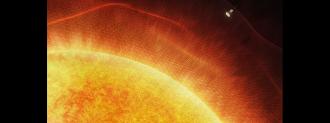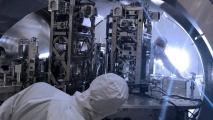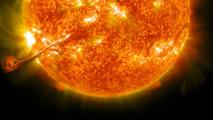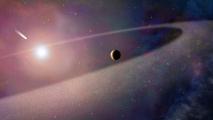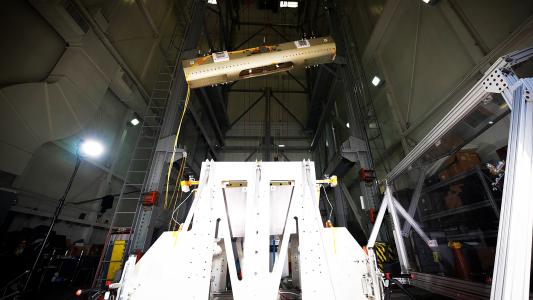The Sun — our planet’s primary source of heat, energy, and light — has been significantly out of reach for all of human history. In 1976, the Helios 2 spacecraft came within 43 million km (27 million miles) of the Sun: less than a third of the Earth-Sun distance and a slight amount to the interior of Mercury’s orbit, marking a record that stood for more than 40 years. In August 2018, however, the scientists behind NASA’s Parker Solar Probe ventured to break that record, coming far closer to the Sun that ever before.
Overcoming the dual difficulties posed by the Sun’s harsh environment and the necessity of shedding almost all of the angular momentum one possesses simply by existing on Earth, the Parker Solar Probe has now shattered the previous record, passing within 7.87 million km (4.89 million miles) of the Sun: so close that reports are claiming that the probe “touched the Sun,” in a callback to Icarus from Greek mythology. What the Parker Solar Probe has done, and is continuing to do, is nothing short of remarkable. But has it really “touched the Sun” or “entered the Sun’s atmosphere,” and if so, what does that actually mean? Let’s dive into the science to find out.
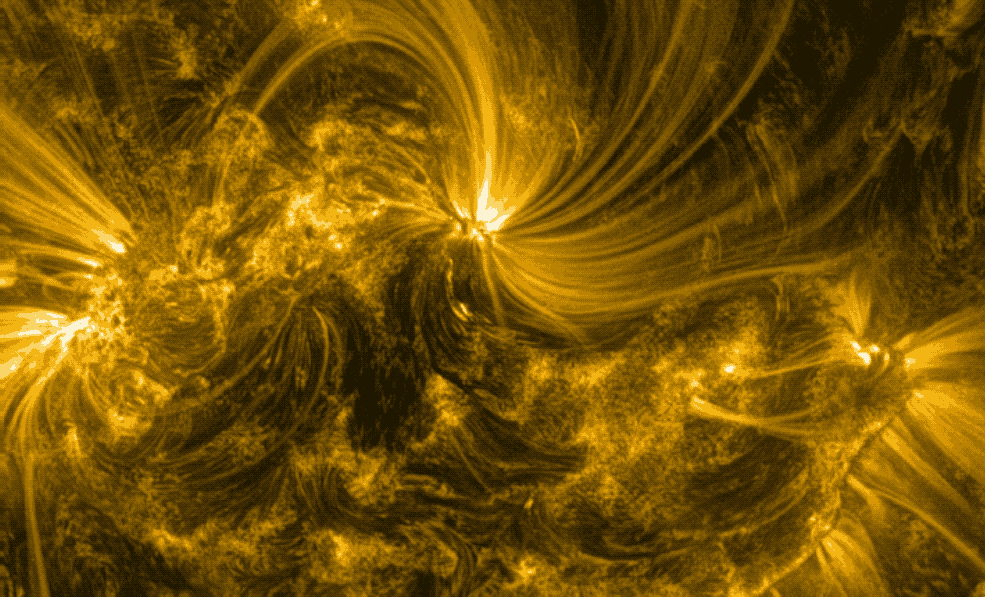
How it gets so close
Here on Earth, as we orbit the Sun, we always remain approximately the same distance away from it. Sure, our orbit is actually an ellipse, not a circle, but there’s an important balance that happens:
- as we reach our farthest point from the Sun, known as aphelion, our orbital speed slows to its minimum
- as we reach our closest point to the Sun, known as perihelion, our orbital speed rises to its maximum
When we launch an object into space, whatever velocity we give it will be superimposed atop Earth’s orbital velocity, meaning that we can either cause it to have more or less orbital energy than Earth does, either boosting it to a higher, less tightly bound orbit with respect to the Sun, or deboosting it to a lower, more tightly bound orbit.
As the gravitational anchor of our Solar System, you’d have to shed a tremendous amount of angular momentum to cause an object from all the way out here in Earth’s orbit to actually fall into the Sun; something we’re a long way from accomplishing, technologically. But thanks to our understanding of gravitation and orbital mechanics, there is a way to get closer than ever before.
The technique of using a gravitational slingshot — where an object swings by a planet in orbit around the Sun — is the key to getting closer than ever before. When you fly by a planet, you can either gain kinetic energy by causing the planet to become more tightly bound to the Sun, or you can lose it by causing the planet to become more loosely bound; these interactions are purely gravitational. We routinely use this technique to send objects to their desired destinations, from the Voyager spacecrafts to New Horizons to the Messenger mission to Mercury.
The Parker Solar Probe has taken a multitude of energy-losing gravitational interactions with planets, especially repeated interactions with Venus, to enable it to get this close to the Sun. In 2019, it first crossed within 23.7 million km (14.7 million miles), flying deeper into the solar wind than ever before. In April 2021, it crossed below a threshold of 13.1 million km (8.13 million miles), where a new set of solar phenomena, long predicted to exist, were directly observed for the first time. Its closest approach to the Sun, as of December 2021, has been to get just 7.87 million km (4.89 million miles) from the star. Its closest final approach, after continued gravitational interactions with Venus, will bring it to within 6.16 million km (3.83 million miles): by far the nearest we’ll ever have come to it.
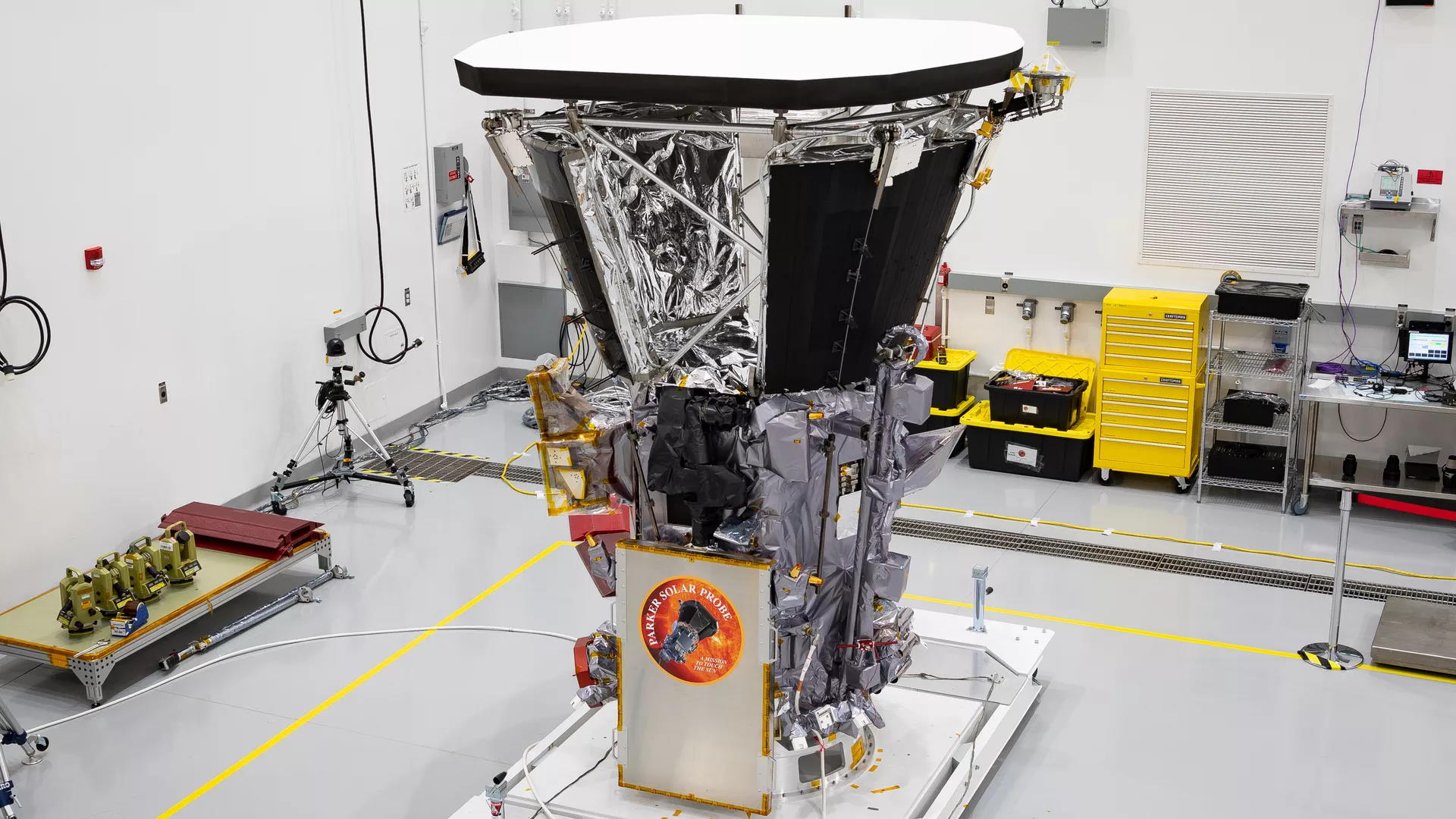
Why hasn’t the Sun’s heat destroyed it?
A special, one-of-a-kind heat shield needed to be developed to protect the Parker Solar Probe. Here at our current orbital distance from the Sun, solar radiation gives us 1.5 kilowatts of power per square meter: that’s how much strikes the top of Earth’s atmosphere. At its closest, the Parker Solar Probe will experience radiation of 650 kilowatts per square meter, or more than 400 times the intensity we experience at our current location. To survive that, the following interventions were taken in the spacecraft’s design.
- It has a Sun-facing solar shield: 2.3 meters in diameter and 11.4 cm thick, made of a carbon-carbon composite, and designed to withstand temperatures of 1370 °C (2,500 °F).
- The shield is coated in a reflective alumina layer — as white as we can make it — to absorb as little solar radiation as possible.
- The spacecraft and its instruments were placed in the center of the shield’s shadow, fully blocking the solar radiation.
- There are multiple autonomous sensors and reaction wheels to ensure that this is always the case, even without a human operator.
- It is powered by a dual array of solar panels: a primary one to gather power when the spacecraft is farther from the Sun, and a smaller, secondary one using pumped-fluid (active) cooling.
Even with all of this, we fully anticipate that heat will eventually render the probe inoperable, but hopefully not before it makes at least one, and possibly up to three, ultra-close final approaches.
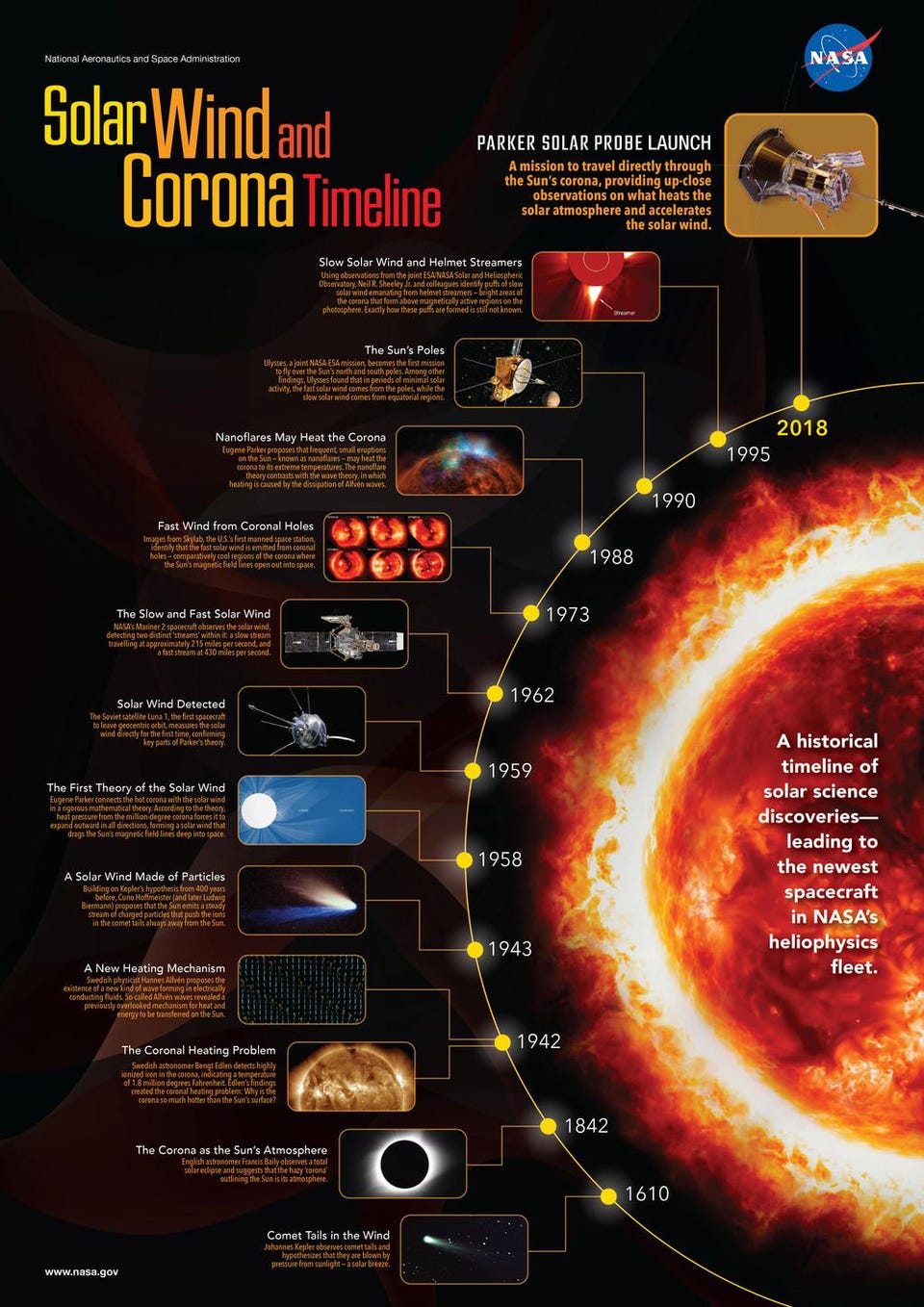
What was the Parker Solar Probe looking for?
This is where the science really gets fascinating. Two of the most important scientists to ever study the Sun were Eugene Parker and Hannes Alfvén. Alfvén was the most important figure in the history of plasma physics, developing the science of magnetohydrodynamics, or how energy and particles are transported in highly energetic, ionized environments, particularly in the presence of strong magnetic fields. His work helped explain phenomena such as the Van Allen belts, the aurorae, and geomagnetic storms. Parker, who’s still alive at the age of 94, was the first to realize how effects that occurred well above the Sun’s photosphere could actually affect the Sun itself.
We’ve known for a long time that the Sun’s photosphere isn’t a solid surface at a single temperature, but rather emits the light that we observe as “sunlight” at many different depths. Instead of behaving as a single blackbody, where it emits light like a non-luminous object heated up to a specific temperature, it behaves as though it’s the sum of a series of blackbodies, teaching us that the Sun doesn’t have a solid surface. During solar eclipses, we’ve been able to see the Sun’s inner corona, including solar prominences and loops: magnetic structures that show the complexity of the Sun’s surface magnetic field. Meanwhile, out far away from the Sun, we only see “streams” of charged particles, which we commonly know as the solar wind.
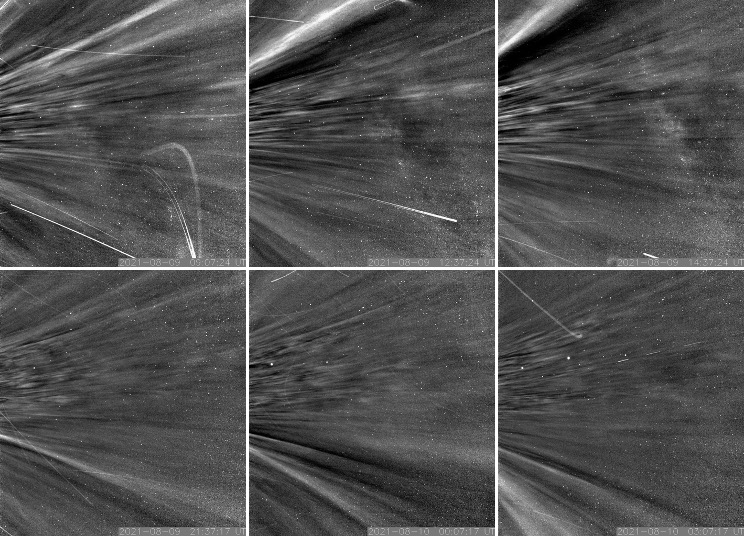
We had an inkling, therefore, that there must be a series of transitions that occur in the behavior of the charged particles and magnetic fields emitted and generated by the Sun as we go from the inner region just above the photosphere to the outermost regions where the solar wind dominates. This was further complicated by the solar corona problem: whereas the photosphere of the Sun is “only” at a temperature of about 6,000 K, the solar corona is much, much hotter: at millions of degrees. Somehow, energy must be getting transferred between the Sun and its corona in a way that goes well beyond mere radiative heating.
Part of the main mission of the Parker Solar Probe is to answer the question of exactly how and where this energy transfer occurs. In theory, there were a number of physical components that would need to be involved in the solution.
First, as you move inwards, you’ll start to see that the solar wind isn’t simply made up of uniform “streams” of charged particles. You’ll find that the solar magnetic field — whose lines the charged particles follow — change directions in a chaotic fashion: what we know as switchbacks. In 2019, at a distance of 23.7 million km (14.7 million miles) from the Sun, the Parker Solar Probe first found them.
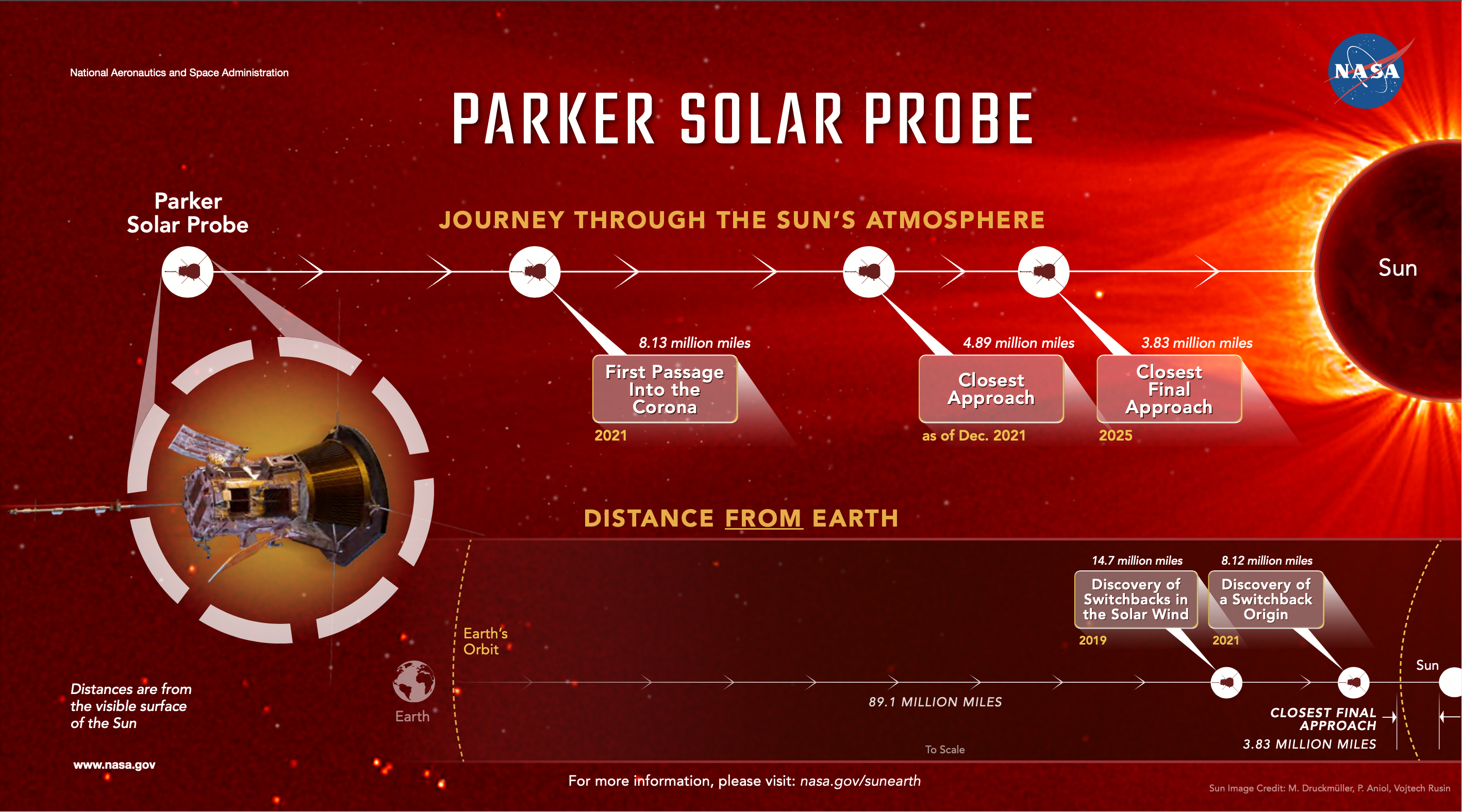
As you continue to move inwards, you’ll find the origin of those switchbacks: what’s known in the scientific literature as an Alfvén point. An Alfvén point has three important properties that are all vital for understanding the physics of the Sun.
- This is a point at which magnetic switchbacks originate, thought to be responsible for the fast solar wind.
- This is also the farthest point from the Sun where the magnetic field exerts a torque on the particles bound to the Sun itself: responsible for “stealing” angular momentum from the Sun and slowing its rotation.
- Perhaps most importantly, what happens at the Alfvén point and further in — but not farther out — can propagate back down onto the Sun itself, allowing for the exchange of energy and momentum in a way that affects the Sun.
Earlier this year, the Parker Solar Probe finally found where this occurs: 13.1 million km (8.13 million miles) away from the Sun. What it hasn’t yet found, but hopes to find, is how these magnetic switchbacks are formed, what role magnetic reconnection plays, and how and whether the switchbacks are connected to magnetic funnels at the base of the solar corona. Additional information about the acceleration of the solar wind, the superheating of the corona, and possibly even insights into forecasting space weather events may be uncovered with additional data and flythroughs.
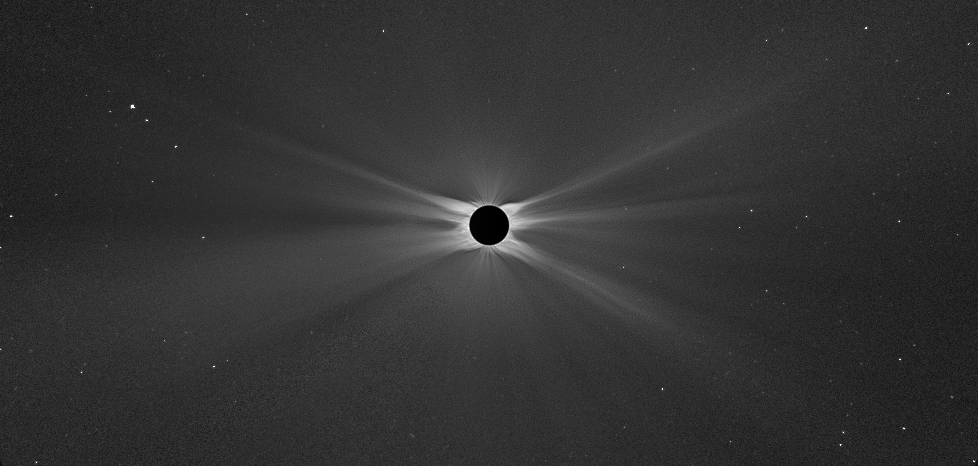
So, did it actually “touch the Sun?”
This is where we descend from legitimate science — the “what we know” and “how we know it” — and dive right into the realm of completely arbitrary definitions. If you take a look at a long-exposure photograph of the Sun’s corona, the type of photos that mathematician/eclipse photographer Miloslav Druckmüller specializes in taking during total solar eclipses, you’ll discover a set of remarkable facts.
For one, you’ll see that there is no discontinuity between the various regions of what lies beyond the Sun’s photosphere. The base of the corona, where the solar prominences and magnetic loops are plentiful, connect directly to the outermore regions of the Sun’s atmosphere, all the way to the outermost reaches of the solar wind.
The longest-exposure eclipse photographs, taken during the longest-duration, darkest total solar eclipse, have revealed that this extended structure extends well beyond the orbit of Mercury, and we now know that it doesn’t just engulf the Earth, but extends even into the outer solar system. From the base of the Sun to the corona to the outermost extent of where the solar wind crashes into the heliopause, it’s all just one continuous structure.
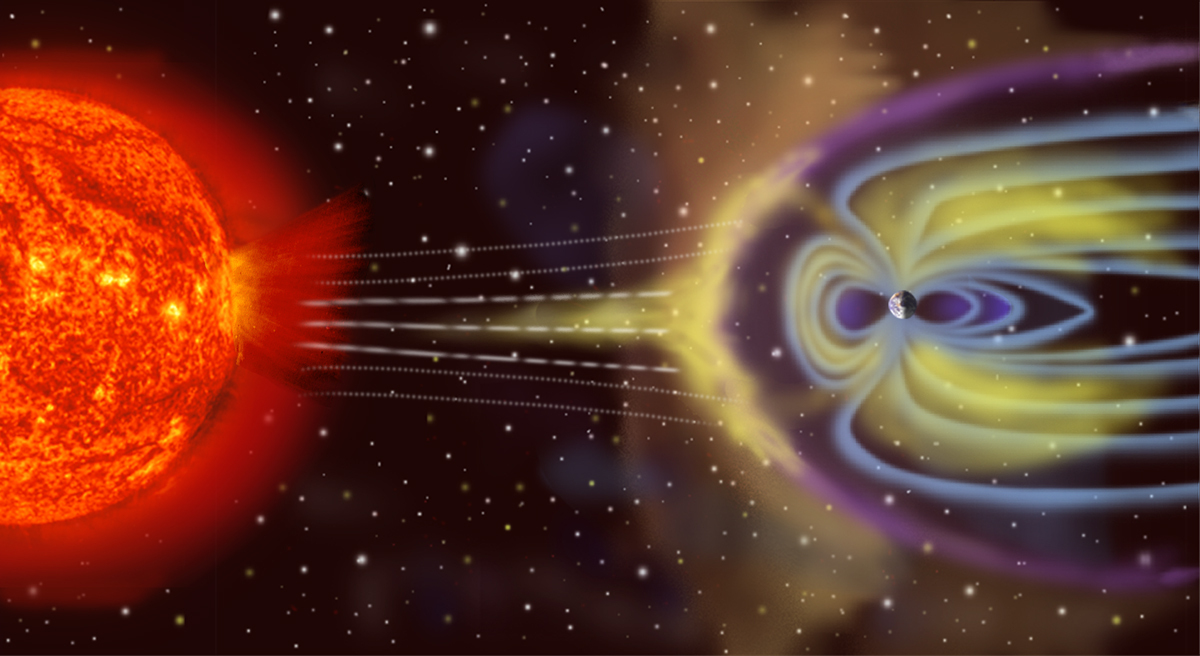
In a very real way, then, our entire planet Earth is “inside” the solar corona, and the solar corona extends beyond even the outermost planet in our Solar System. The corona doesn’t end at some arbitrary point and then become the solar wind; it’s all one continuous structure.
So why, then, has everyone been asserting that “we touched the Sun” for the first time?
Because it’s only when you’re at or interior to the Alfvén point that your actions — such as generating a pressure wave, a magnetic field, an electric current, or an energy-carrying signal — can actually reach the Sun itself. If the Parker Solar Probe did such a thing, it could only have an effect on the Sun when it’s inside that Alfvén point, not outside. Only if you use that very particular definition, a definition preferred by a significant portion of solar physicists (including many working on the Parker Solar Probe) but heavily disputed by others (including many not associated with that particular mission), can you claim “we touched the Sun.”
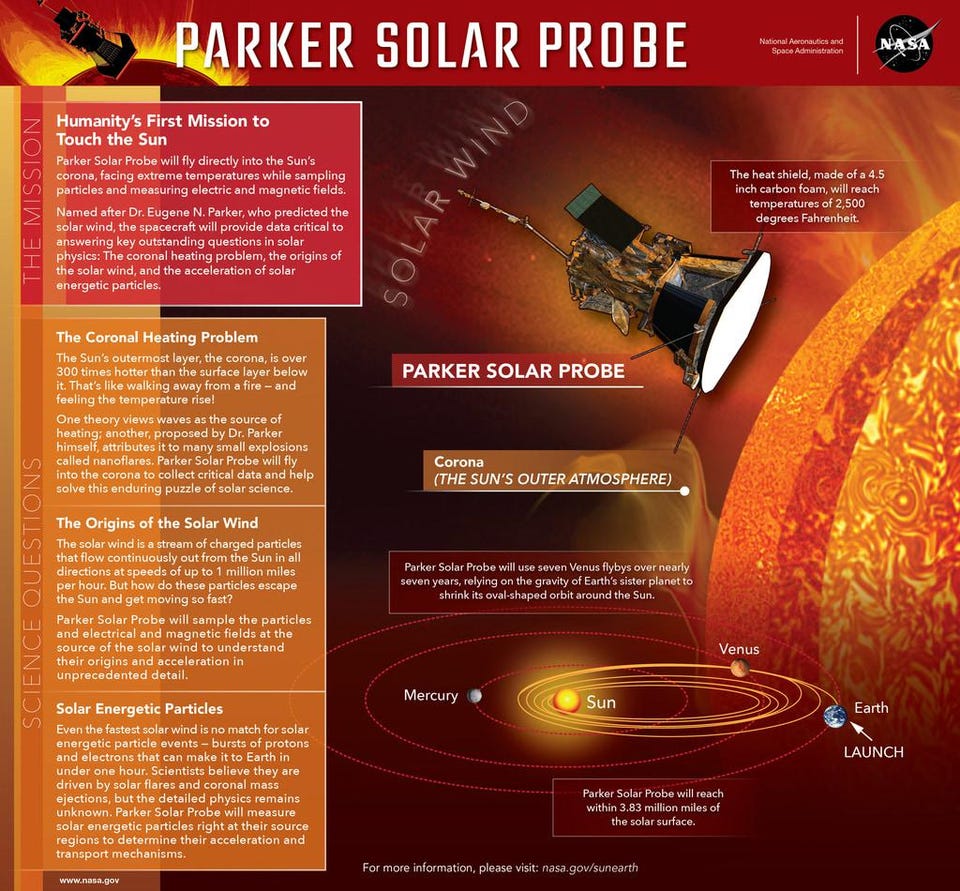
What the Parker Solar Probe has achieved, or rather, is still in the process of achieving, is nothing short of remarkable. The combination of engineering and science that’s gone into this mission, to probe a region of space in situ that we’ve never braved before and learn what’s physically occurring there, has already paid substantial dividends. We’ve detected magnetic switchbacks, located their origin, and discovered the Alfvén point around our Sun.
Or rather, we’ve discovered the point in the plane of our Solar System where the Alfvén critical surface extends to. Our Sun, as measured by its photosphere, is the most perfect sphere to naturally occur in our entire Solar System. And yet, if you define “the Sun” by its Alfvén critical surface, that immediately makes it the least spherically symmetric naturally occurring object we’ve ever seen, perhaps even less so than ‘Oumuamua.
However, it’s false to claim that we’ve physically touched the Sun, just as it’s an extremely questionable proposition to assert that the corona ends at a specific point in space, rather than existing as a continuous, wind-driving structure that extends from the base of the Sun all the way through the outer reaches of the Solar System. There’s going to be a lot of fascinating information to learn about our Sun, how it works, and how it affects the entirety of the Solar System, from the inside out. Let’s let that be enough, rather than inventing dubious stories about where the corona ends or whether or not we’ve “touched” the Sun. In science, we care about what’s actually true. Everything else is just our own prejudices laid atop our physical reality.
We’d love to hear from you! If you have a comment about this article or if you have a tip for a future Freethink story, please email us at tips@freethink.com.
